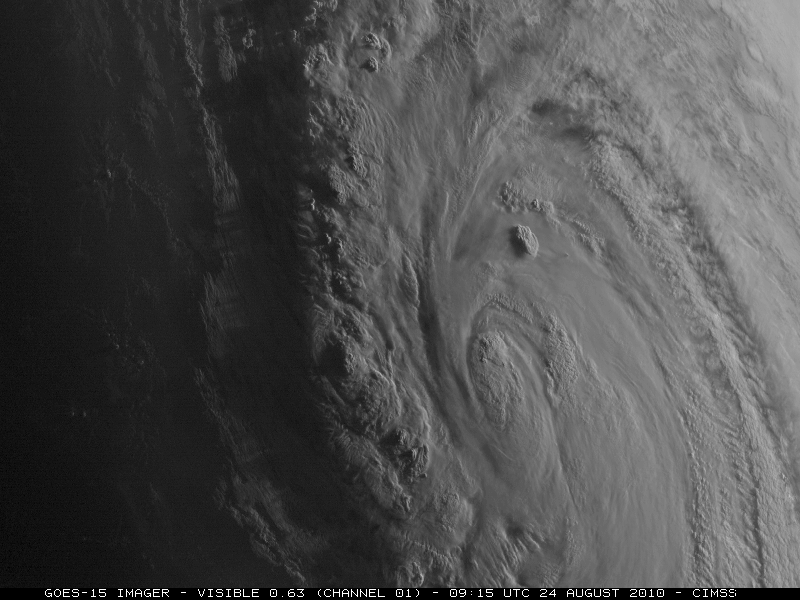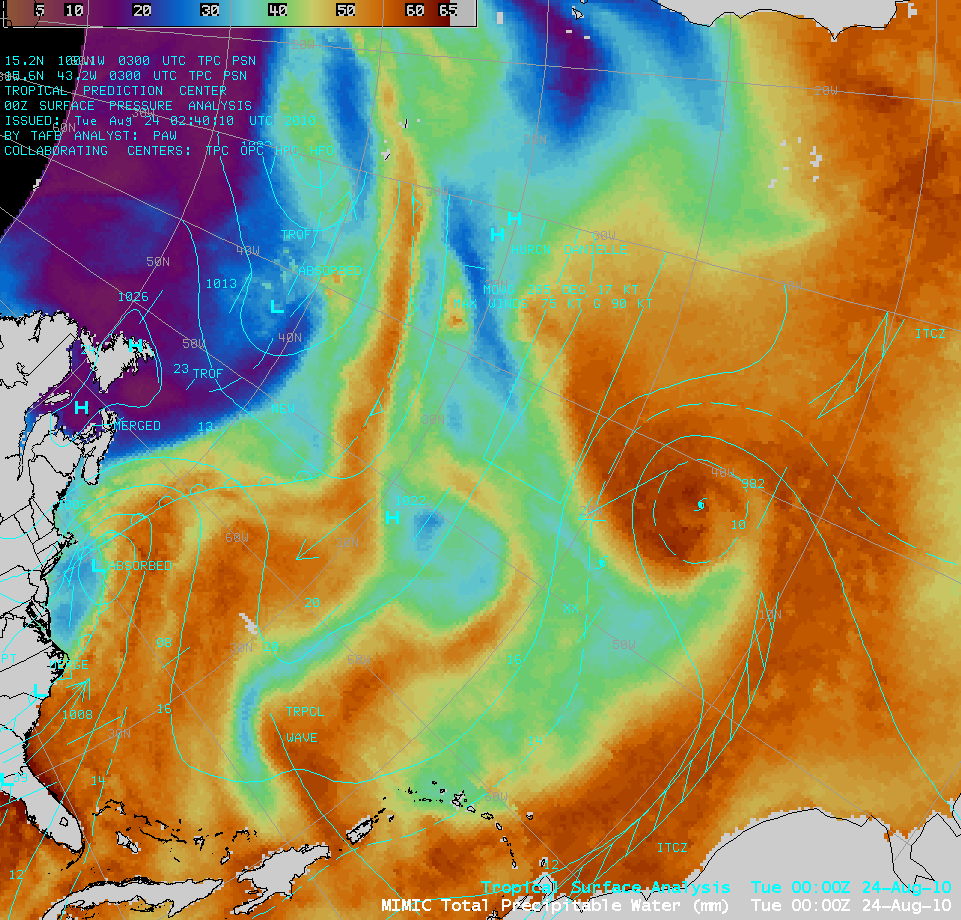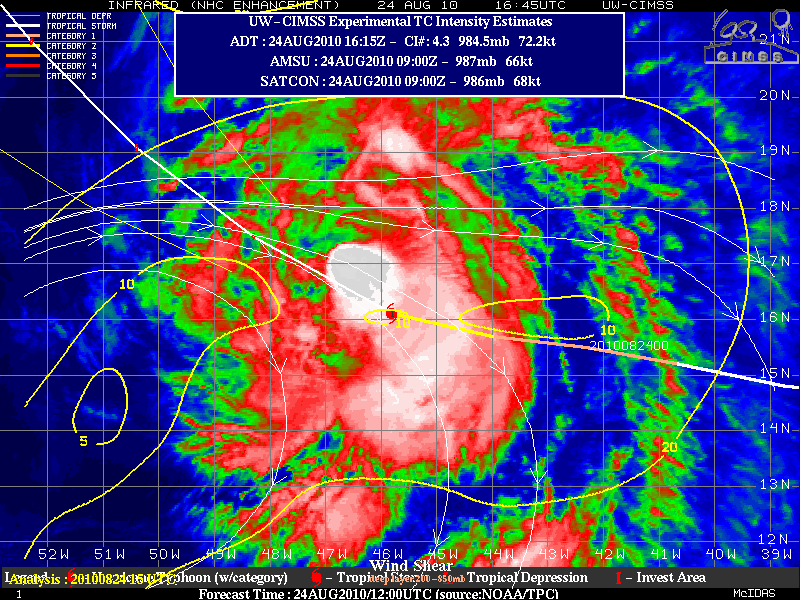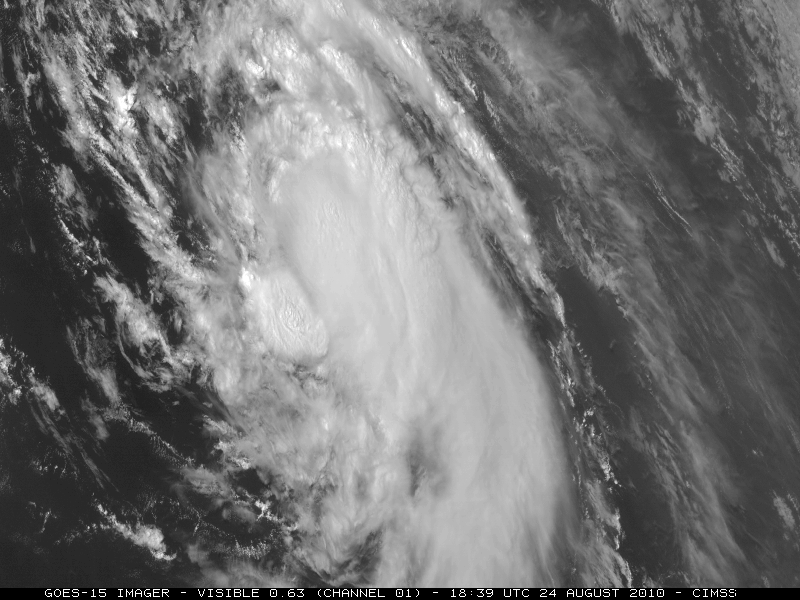Hurricane Danielle
As part of its NOAA post Launch Science Test, the GOES-15 satellite was placed into Super Rapid Scan Operations (SRSO) mode on 24 August 2010, providing images at 1-minute intervals to monitor Hurricane Danielle. McIDAS images of GOES-15 0.63 µm visible channel data (above) did show some interesting convective development associated with Danielle, but no eye was apparent.
While Danielle had intensified into a Category 2 hurricane during the preceding overnight hours, a collapse in both intensity and in satellite appearance began during the daylight hours. AWIPS images of the CIMSS MIMIC Total Precipitable Water (TPW) product (below) did show that some dry air became entrained into the southern and eastern quadrants of Danielle, but fairly far from the center of the tropical cyclone.
In addition to the entrainment of dry air, there was also a change from light easterly wind shear on 23 August to light northwesterly wind shear on 24 August, as seen on images from the CIMSS Tropical Cyclones site (below). It is unclear to what degree either of these factors played in the decrease in intensity of Hurricane Danielle (which was actually downgraded to a Tropical Storm later in the day)..
There was an 8-hour gap in SRSO imagery due to a GOES-15 satellite maneuver, but once the 1-minute interval imagery resumed, it almost appeared as though Danielle was trying to form a more organized convective eyewall later during the day (below).





